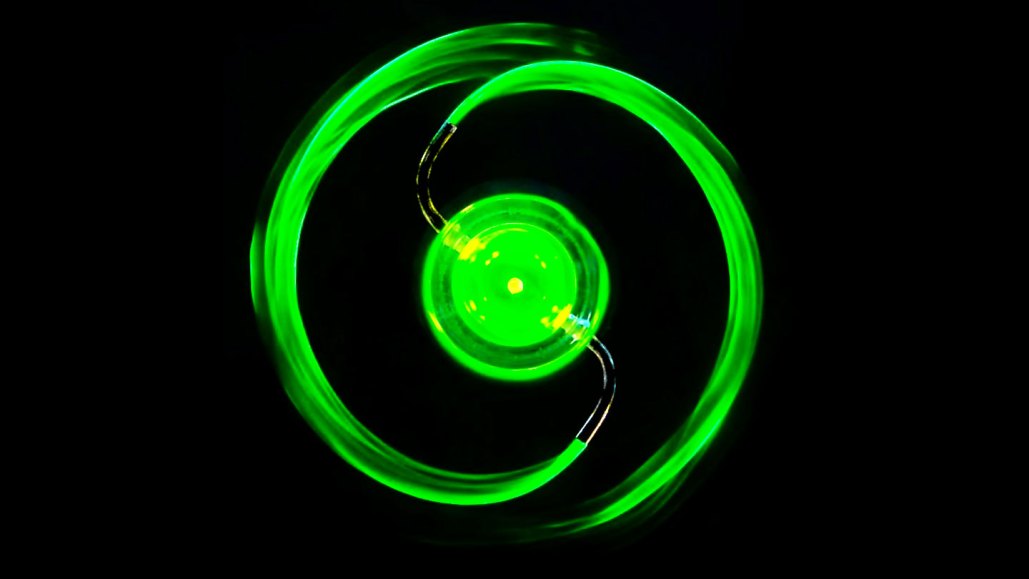Physicists Explain the Quirky Consequences of Water Sucked into Lawn Sprinklers

Physicists are often enthralled by complex conundrums, ranging from concepts such as the origin of the cosmos to the essence of space and time. Even something as simple as the rotation of lawn sprinklers can pique their interest.
An innovative experiment has managed to solve a puzzling question in physics that was introduced to prominence by physicist Richard Feynman in the 1980s. The riddle involves a specific type of sprinkler that functions by ejecting water through both ends of an S-shaped tube. The sprinkler pivots away from the water flow thanks to the conservation of angular momentum, which is quite simple to understand.
The conundrum appears when placing the sprinkler in a water-filled tank and reversing its function so that it draws water in. On the surface, it seems to be an innocuous inquiry. But due to the complexity of fluid flows and subtle nuances of momentum conservation, this has led to disagreements among physicists. They've speculated that the sprinkler might either spin in the opposite direction or remain stationary. Previous experimental evidence has been inconsistent.
Leif Ristroph, an applied mathematician, decided to tackle this issue with his team. Ristroph, who is affiliated with New York University, mentioned that it was one of the most challenging issues they have ever encountered. They conducted the experiment using a carefully engineered transparent sprinkler and validated their findings with mathematical computations. The sprinkler operated suspended in a water tank to minimize friction, a phenomenon that had complicated previous experiments. When operated in reverse, the sprinkler indeed rotated in the opposite direction, according to their research published in Physical Review Letters. They also explained the reason behind this behavior.
Unlike the normal functioning of the sprinkler which expels water outwards, the reverse function resulted in the formation of water jets inside the sprinkler. These internal jets created vortices, which were visualized by highlighting microscopic particles in the water with lasers. Crucially, these jets and their associated vortices weren't symmetrical. When these jets collided in the middle of the sprinkler, they veered off at an angle, suggesting a glancing collision rather than a head-on encounter.
This occurs because the water flow in each jet is displaced as it navigates through the curved arms of the sprinkler, even though the arms themselves are perfectly aligned. This asymmetry causes the sprinkler to spin in the opposite direction to maintain angular momentum conservation.
A simple dash of understanding was all it took to solve the conundrum of the sprinkler.




